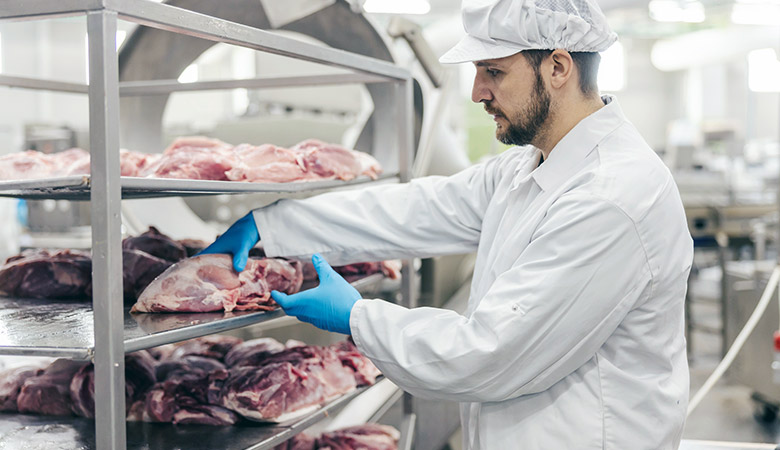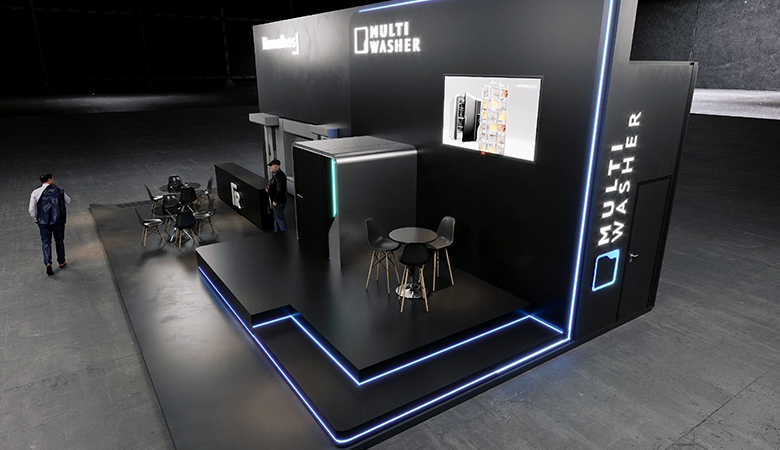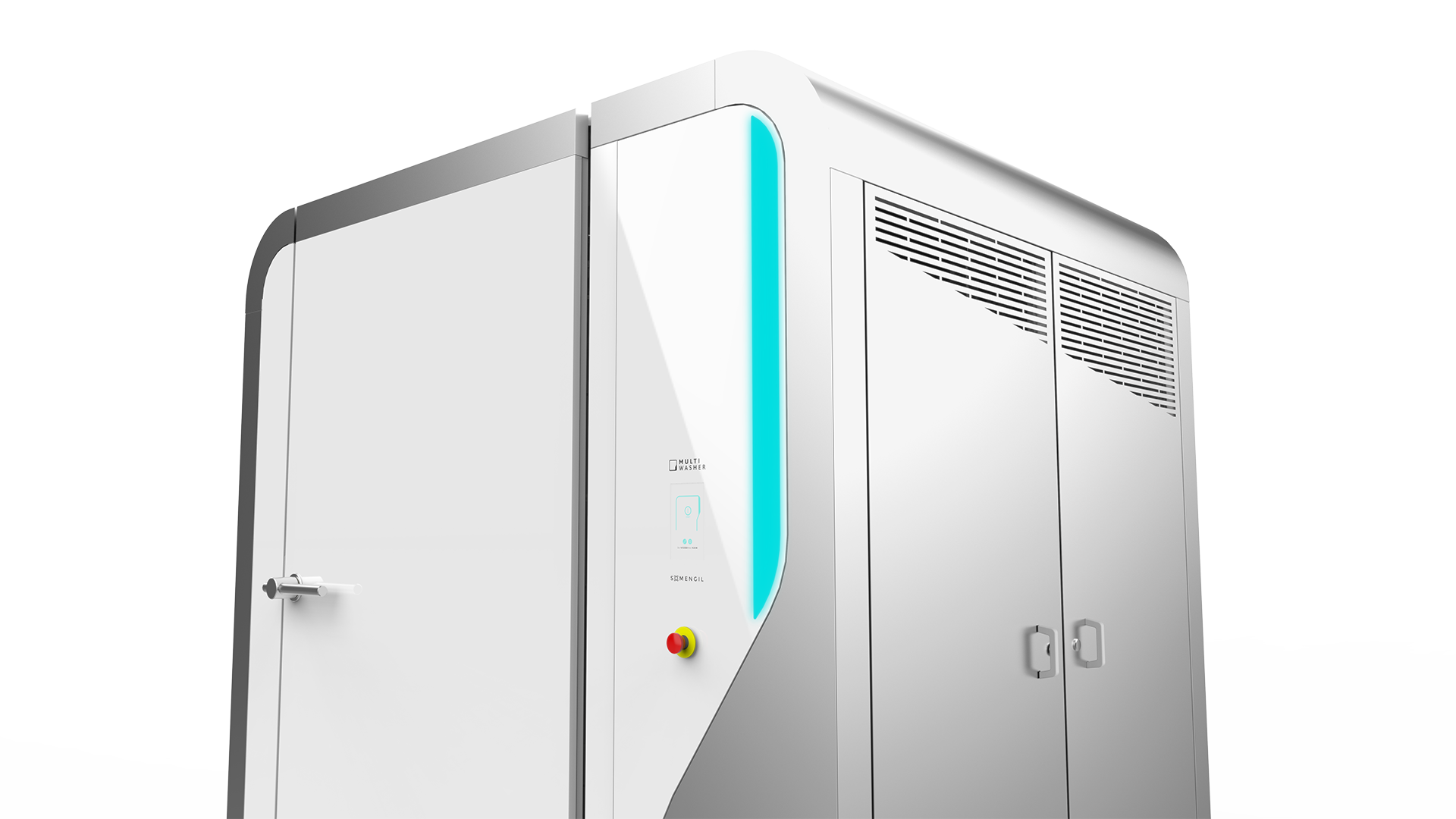Lavagem Industrial / Artigos
Washing system: how to increase efficiency
An effective washing system has a direct impact on key management indicators and can represent significant savings. Find out how.

 17 minutos de leitura
17 minutos de leitura
2022-02-17 15:00:00
A complete and robust washing system is key for ensuring that an organization operates with high levels of quality and hygiene. However, many companies still struggle to achieve an integrated view of a washing system - including the processes, training, work standards, equipment and continuous improvement routines. Understanding the importance of each of these elements and how they interact is crucial. Find out what a washing system is and how to implement it in your company.
What is a washing system?
A washing system encompasses a set of equipment, processes, and technologies used to perform the cleaning of equipment, work pieces, surfaces, or industrial utensils. This system is designed to meet the specific needs of different industries, where hygiene and cleanliness are critical success factors.
Industrial washing equipment – such as the MultiWasher – is designed to effectively remove different types of dirt, residues, and contaminants such as grease, oils, solid particles, chemicals, and microorganisms on food or clothing carts.
What should an industrial washing system include?
An industrial washing system should include several components and elements to ensure efficient and proper washing.
- Specialized washing equipment. Washing equipment should be selected based on the specific needs of the industry, the type of dirt to be removed, and the characteristics of the products to be washed. When designing an industrial washing system, it is important to consider sustainable and energy-efficient practices. This is the case with MultiWasher, which uses water reuse technologies, heat recovery systems, and more sustainable chemicals, besides optimizing energy consumption for washing food carts and laundry carts in hospital catering and laundry areas.
- Cleaning products. Choosing the right cleaning products is essential to remove different types of dirt and hazardous biological waste. It is important to choose chemicals that are safe, effective, and compatible with the materials being washed.
- Control and automation equipment. Automation plays a key role in an industrial washing system. For example, the use of sensors, timers, and monitoring systems ensures precise control of washing processes, proper dosing of chemicals, and operational efficiency.
- Proper structure and layout. An industrial washing system should be designed with a suitable structure that facilitates the efficient flow of the products to be washed. It is also important to consider the available space in the industrial facility.
- Standard operating procedures. It is essential to define and implement standard operating procedures not only to guide operators – regarding correct washing steps, equipment usage, chemical dosages, and equipment maintenance and cleaning – but also to ensure compliance with regulations.
- Maintenance procedures. Besides cleaning procedures, an industrial washing system requires a regular maintenance routine to ensure proper equipment operation and extended equipment life. This may include regularly checking components, changing filters, lubricating moving parts, checking for leaks, and scheduling preventive maintenance.
What are the advantages of having a washing system?
Implementing an industrial washing system offers several advantages for companies, especially for hospital catering and laundries. These two cases present very challenging needs. Utensils used in hospital catering must be sanitized to ensure the health of patients and hospital staff. Therefore, items such as trays, cutlery, cups, containers, and transport carts require a washing system to ensure perfect sanitation and safe use. Hospital laundries also have specific needs, such as the correct processing of textiles, side tables, carts, and transport baskets.
There are several advantages to having a washing system, which cut across these two main cases. The benefits include:
1. Efficient cleaning
An industrial washing system is designed to remove dirt, residues, and elements that can contaminate industrial equipment, parts, and surfaces. The combination of specialized equipment, appropriate washing chemicals, and specific techniques results in more thorough and efficient sanitization than conventional methods.
2. Improved product quality
An industrial washing system eliminates impurities, unwanted particles, and bacteria that can affect both product quality and safety. This is especially relevant in sectors such as the food and pharmaceutical industries.
3. Compliance with regulations and standards
The food, pharmaceutical, and healthcare industries are subject to stringent regulations regarding hygiene, safety, and environmental compliance. A proper industrial washing system enables companies to meet these requirements by ensuring compliance with applicable standards and regulations. This prevents legal problems and protects the company’s reputation.
4. Increased productivity
With an efficient industrial washing system, the time required to perform sanitization is reduced. This results in less production downtime, allowing for increased production capacity and better workflow. In addition, automation and optimization free up human resources for more productive tasks.
5. Save resources
A well-designed and customized industrial washing system saves water, energy, and washing chemicals. With the right equipment, correct dosing of chemicals, and efficient control of water and energy consumption, companies can reduce waste and operating costs.
6. Improved safety and working environment
Industrial washing also contributes to a safer and healthier working environment. Removing hazardous waste and biological elements reduces the risk of accidents and occupational illness. In addition, compliance with cleaning and hygiene practices creates a more pleasant and productive work environment.
How to create an effective hospital washing system?
Hygiene in the hospital environment is complex, as it depends on the pathogens present, which determine the most suitable equipment, the cleaning products used, and the procedures to be followed. But to create an effective washing system, it is also necessary to consider the type of surface, the level of contamination of the environment and, finally, the training of the teams.
These are the most important steps in creating an effective washing system:
1. Define the washing system's goals and metrics
The first step in creating an effective washing system is a clear vision of the objectives to be achieved and the metrics to evaluate performance.
What to do:
- Identify the needs: What is the main objective of the washing system? Reduce costs? Increase efficiency? Ensure food safety? Comply with legislation in the sector?
- Set clear objectives: Define specific goals, such as reducing washing time by 20%, reducing water consumption by 15% or increasing energy efficiency by 10%.
- Determine success metrics: Choose key performance indicators to monitor progress, such as the average washing time, the amount of resources (water, energy, detergents consumed), the quality of cleaning and the frequency of maintenance required.
2. Map out the current washing system and identify waste
Next, evaluate the current washing system by mapping out the existing processes and identifying areas of waste and inefficiency.
What to do:
- Map the current process: List the steps in the washing process, from preparation to completion. Include the equipment used, chemicals, cycle times and procedures.
- Identify waste: Look for waste of resources such as water, energy and chemicals, as well as downtime or unnecessary manual processes. Use tools such as the Ishikawa Diagram or Pareto Analysis to help identify them.
3. Clearly define the washing requirements
The next step is to define the specific requirements for the new washing system, based on the needs.
What to do:
- Determine the washing needs: Specify the types of dirt and residue that need to be removed and the standards of cleanliness required. Consider the different types of materials and surfaces to wash.
- Choose equipment and technology: Select equipment and technology that responds to those requirements. The MultiWasher is the choice of brands that want to increase the effectiveness and efficiency of their washing processes.
4. Reduce dependence on detergents and other chemicals
There are no perfect detergents and chemicals that are effective against all bacteria and viruses, have no impact on the environment and are completely safe and easy to use. For example, hydrogen peroxide vapor leaves no residue, but it is expensive, can be corrosive and is difficult to use. Chlorine solutions are effective against spores, but have a strong odor, leave residue and can damage surfaces. UV light also leaves no residue but does not disinfect areas where it cannot reach directly.
What to do:
- Adopt advanced technologies: Consider technologies that reduce the need for chemicals, such as steam washing systems or high-pressure machines, like MultiWasher.
- Use ecological products: Replace aggressive detergents with ecological and biodegradable alternatives that are less harmful to the environment and human health.
- Implement water recycling methods: Choose systems that recycle and reuse washing water to reduce the amount of detergent. With the MultiWasher, the same water is treated for use in multiple washing cycles.
5. Clearly define the roles and responsibilities of each team
If washing-related roles and responsibilities are not clearly defined, it is likely that certain critical cleaning tasks will not be carried out. Problems such as staff absences or the transfer of responsibilities between colleagues can aggravate the situation.
What to do:
- Assign responsibilities: List the tasks that need to be done and assign specific responsibilities to each team member. Make sure everyone understands their roles.
- Create simple, visual work standards: Create operational standards that describe in a simple and visual way how each task should be carried out. Include clear instructions on the use of equipment, chemicals and safety protocols.
6. Invest in automation
Manual processes may be an immediate solution, but they can't guarantee a consistent and complete wash in every cycle - one study found dirt in 50% of cases after manual cleaning. Automatic washing systems, on the other hand, ensure high-quality washing in every cycle.
What to do:
- Evaluate the areas that can be automated: Identify the steps of the washing process that can be automated. These could include dosing, temperature control, wash and rinse cycles or drying. With MultiWasher, most stages can be automated.
- Choose the right technology: Consider automated industrial washing machines with process control systems, sensors and monitoring software. With the MultiWasher it is even possible to measure the quality of the wash thanks to ATP meters, which quantify the degree of brightness emitted by the organisms in order to assess the perfection of the wash.
- Run small tests to see what works. Doing small tests beforehand allows you to identify what works best and avoid large investments in processes that may not be effective.
7. Recognize the risk of contamination of objects and tools
Often, the focus of washing systems is on cleaning spaces, without considering the surfaces and equipment that come into direct contact with people. That's why it's important to recognize and mitigate the risk of infection from objects and tools.
What to do:
- Identify the risks: Evaluate the types of objects and tools used in your sector and identify those that are most likely to be contaminated with pathogenic organisms. Items that come into direct contact with food, patients or frequently touched surfaces represent a high risk.
- Implement monitoring methods: Use biological or chemical indicators to monitor the effectiveness of disinfection processes and ensure that they meet hygiene standards.
- Train staff: Train staff to recognize infection risks and follow established disinfection protocols.
8. Analyze the impact of the washing system on other processes
To be effective, a washing system must be integrated harmoniously with the other processes and contribute positively to overall efficiency.
What to do:
- Map related processes: Identify processes affected by the washing system. This could include production, logistics or maintenance.
- Calculate interdependence: Assess whether the introduction of the new washing system makes those processes easier or more difficult. For example, a faster washing system can speed up production, while a system that consumes a lot of water can affect other processes that also depend on this resource.
9. Train the team
Training staff is essential to the success of any washing system. Ensuring that everyone understands procedures can make a big difference.
What to do:
- Identify training needs: Assess the areas in which the team needs more knowledge or skills.
- Develop and implement a training plan: Create a training plan that addresses those needs. Topics such as washing procedures, equipment use, waste management and safety practices can be crucial.
10. Create a culture of continuous improvement
Build a culture of continuous improvement for long-term success. This type of culture promotes a mindset of constant evolution and improvement, ensuring that the washing system maintains high standards and adapts and improves over time.
What to do:
- Collect data: Use sensors and software that help monitor performance in real time.
- Involve the team: Encourage all team members to actively participate in the improvement process. Create an environment where everyone feels responsible and motivated to identify areas for improvement and propose solutions.
- Implement and test improvements: After identifying potential improvements, implement them on a small scale and test the results. Use the tests to validate the effectiveness of the changes before wider implementation.
- Evaluate and adjust continuously: Continuous improvement is a never-ending process. Regularly evaluate the results of changes and adjust as necessary to ensure that the washing system continues to improve.
MultiWasher, the washing system adapted to any sector
MultiWasher is the ideal solution for companies that need an efficient and versatile washing system. From the food industry to logistics and retail, this equipment can perform complete and reliable washing and disinfection in integrated cycles, optimize the process and save resources. Contact us today for a personalized demonstration and experience the efficiency that only MultiWasher can offer.
Também pode gostar

Lavagem Industrial / ArtigosArtigos
Meat industry: the complete guide for a perfect washing solution
The meat industry has specific hygiene needs stemming from a high risk of contamination. Find out how to choose the best washing solution.
Postado em 2023-09-07

Lavagem Industrial / ArtigosArtigos
Fispal: journey to the heart of innovation
Somengil was at Fispal, the largest meeting in the food and beverage sectors in Latin America. Discover the latest news.
Postado em 2023-08-25

Lavagem Industrial / ArtigosArtigos
5 key trends from Anuga 2024
We were at Anuga, one of the major fairs in the food sector worldwide. Discover the 5 main trends that will shape the upcoming years.
Postado em 2024-05-07






















 Português
Português English (UK)
English (UK) English (USA)
English (USA) Français
Français Español
Español Deutsch
Deutsch